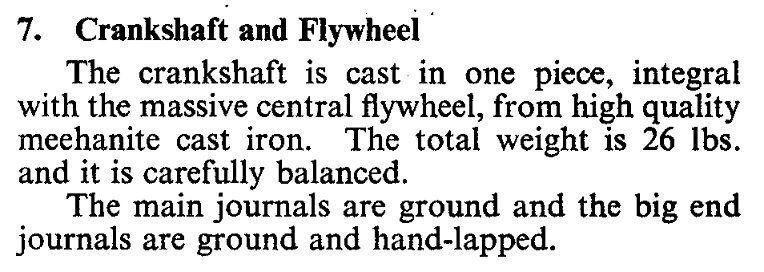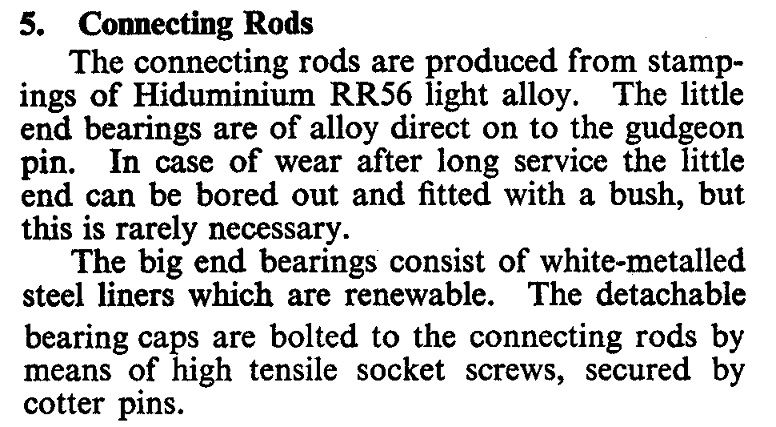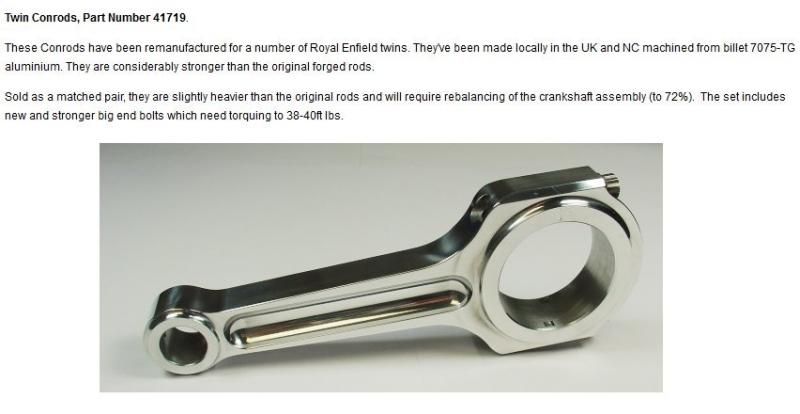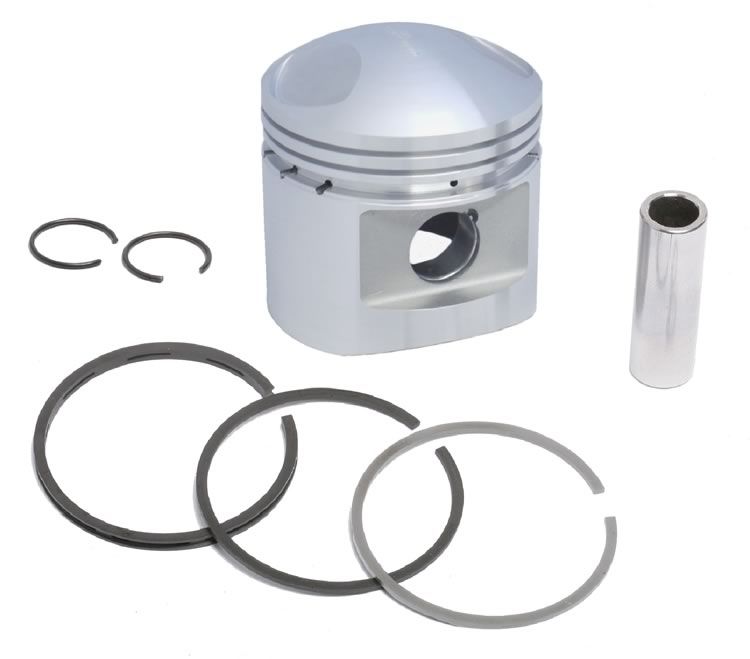Alright. So one last thing about the crank, and then time to move on until I need to address it again. So, everyone knows the "stories" of these Enfield twins having weak bottom ends. I have been scouring the web for quite some time trying to find every bit of information I can about the 700cc twin motors. I have to be honest, there isn't hardly
ANYTHING out there stating these cranks have a tendency to grenade. As I mentioned before, the connecting rods were garbage, and it seems like (from what I can find) about 50% of catastrophic failures were caused by throwing a rod, the other other 50% of catastrophic failures were caused by piston seize from over heating the motor by cranking at too high of RPMs for too long with the cast iron cylinders. I've spent the last hour on Google searching for the likes of "700 twin Royal Enfield Blown Motor". You know what I found? A whole bunch of pics of
REALLY nice bikes, a few pics of some hot girls on some nice bikes, and a few pics of
MY '58 TRAILBLAZER HEADS AND GASKETS when I blew them out in the spring time. There is basically nothing, and I mean
NOTHING out there about these cranks being a POS. The only information I can find is this:
After the German surrender in 1945, the Enfield Cycle Company resumed production of the pre-war G and J series civilian models alongside a modified version of the “Flea”. By 1947 the 500cc Model J was back in production, fitted with new hydraulic damping telescopic forks as opposed to the old style girder forks. These were basic “ride-to-work” models which proved popular in a world hungry for inexpensive transport: a large number of surplus military machines were also purchased and reconditioned by the factory. In 1948 a groundbreaking development in the form of rear suspension springing was developed, initially for competition model “trials” models (modern enduro type machines). This was released in 1949 on the first new production models; a 350cc OHV Bullet with a sportier alloy head, swing arm frame and a 500cc twin: Enfield’s 25bhp answer to the Triumph Speed Twin. This machine was the forerunner of a range of Royal Enfield Meteors, Super Meteors and Constellations. Offering good performance at modest cost, these machines sold well at the time despite an unremarkable reputation. The 700cc Royal Enfield Constellation Twin released in 1959 has been described as the first Superbike.
In the late 1950s and early 1960s Royal Enfield produced a number of 250cc machines, the most popular of which was the 248cc pushrod OHV single cylinder Crusader. On the larger displacement end of their line, the first Interceptor was introduced in 1960: a highly tuned version of the company’s 692cc vertical twin intended for export to the USA and Canada. All these engines had the prefix letters “VAX” and are often referred as “VAX Interceptors”. Featuring twin carburetors, a factory lightened and balanced crankshaft, hot “R” cams, Lucas racing magneto and a few other modifications compared to road going models, the highly tuned engines demanded constant maintenance and many ended with catastrophic damages to the bottom end. Only a handful of these bikes survived which makes them one of rarest post-war Royal Enfield models.
Nowhere does it ever say it was the crank itself that failed. Don't get me wrong, I know this crank isn't invincible, but all my research points towards rod failure, NOT crank failure.
The following information is directly from my Factory Repair Manual:



Here are the rods and pistons I now plan on using available from Hitchcock's:



Scottie